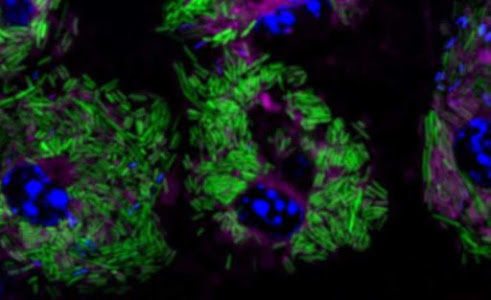 |
| This fluorescence microscopy image shows yeast vacuoles that have undergone phase separation.Luther Davis/Alexey Merz/University of Washington |
Membranes are crucial to our cells. Every cell in your body is enclosed by one. And each of those cells contains specialized compartments, or organelles, which are also enclosed by membranes.
Membranes help cells carry out tasks like breaking down food for energy, building and dismantling proteins, keeping track of environmental conditions, sending signals and deciding when to divide.
Biologists have long struggled to understand precisely how membranes accomplish these different types of jobs. The primary components of membranes — large, fat-like molecules called lipids and compact molecules like cholesterol — make great barriers. In all but a few cases, it’s unclear how those molecules help proteins within membranes do their jobs.
In a paper published Jan. 25 in the Proceedings of the National Academy of Sciences, a team at the University of Washington looked at phase separation in budding yeast — the same single-celled fungus of baking and brewing fame — and reports that living yeast cells can actively regulate a process called phase separation in one of their membranes. During phase separation, the membrane remains intact but partitions into multiple, distinct zones or domains that segregate lipids and proteins. The new findings show for the first time that, in response to environmental conditions, yeast cells precisely regulate the temperature at which their membrane undergoes phase separation. The team behind this discovery suggests that phase separation is likely a “switch” mechanism that these cells use to govern the types of work that membranes do and the signals they send.















.jpg)
